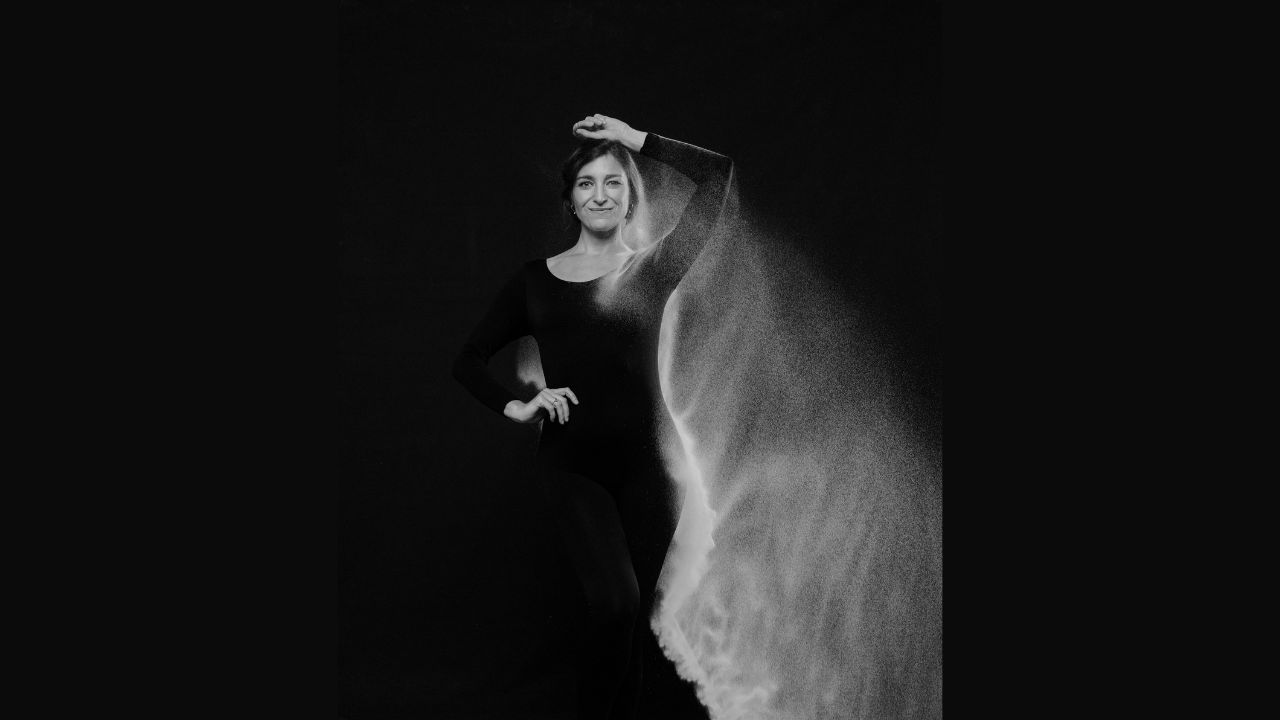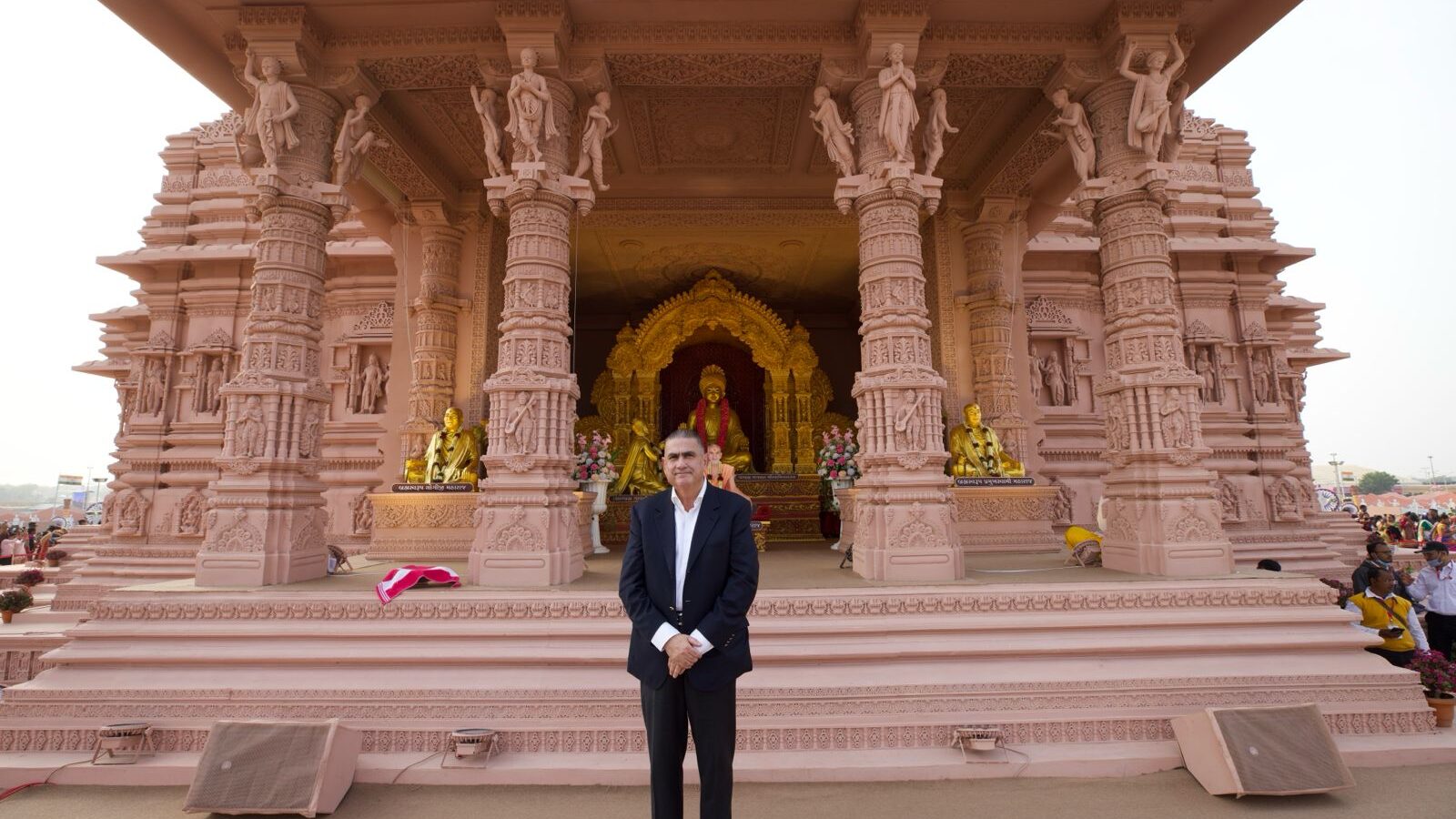Three Bandhas in Haṭhayogapradīpikā
A textual study based on Jyotsnā Commentary of Brahmānanda
1.Introduction
Haṭhayoga as per the text Haṭhayogapradīpikā(a 15th CE) consists of four limbs a) Āsana b) prāṇāyāma c) Mudrās and d) Nādānusandhāna (Ref verse). If one observes the number of verses dedicated to each of these limbs in Haṭhayogapradīpikā it can be noted that the chapter on Mudrās are discussed in 130 verses which is the highest. Mudrās are also very critical in awakening the Kuṇḍalinī and allowing Prāṇa to flow into the suṣumnā – which is central in the practice of Haṭha. Even among the ten Mudrās three Bandhas are very important practices. They have been discussed twice in the text - once in second chapter, just before the commencement of the eight Kumbhakas and for a second time the three Bandhas are discussed in the third chapter as part of the ten Mudrās.
Jyotsnā a commentary on Haṭhayogapradīpikā by Brahmananda is very systematic and elaborate work in saṃskṛta . Though this commentary is very valuable, insights from the commentary are seldom noticed. An English translation of this commentary also has appeared (Kausthub Desikarchar 2016). Even when such translations exist, the teachings from the commentary are yet to find their way into the teaching tradition of Yoga in current times as the tradition of teaching of Saṃskṛta texts on Yoga is rare. Hence this paper makes an attempt to bring to fore the practical insights and authentic views that the text and its commentary offer on the three Bandhas. It is to be noted that the Adyar Library edition of the text and the commentary (Raja, Kunjunni,k, Ed. (2000)) has been used for this paper.
2. Bandhas– Role & benefits
Before getting into the technique of practice of Bandhas, which is of central importance of to this paper, the role and benefits of the Bandhas are initially discussed. It is quiet natural that only the knowledge of the role and benefits of the practice will encourage the practitioners to take up the practice.
This section can be seen in two parts.
- Role: The text itself gives an important role (in the second chapter) to the three Bandhas in the practice of Prāṇāyāma. And in the third chapter of the text the role of the Bandhas in awakening Kuṇḍalī and making the Prāṇa flow in Suṣumnā is also mentioned.
- Benefits: In the third chapter, benefits of each of the Bandhas are discussed separately.
2.1 Role of the three Bandhas in Prāṇāyāma and Awakening Kuṇḍalī
The prāṇāyāmas are called as Kumbhakas in the Haṭhayogapradīpikā as the Kumbhaka component is very important in the practice of Prāṇāyāma. And the right way of practicing of Kumbhakas is practicing them with the three Bandhas. A relevant portion of Verse 2.18 mentions the following about the practice of Bandhas in the context of Prāṇāyāma –
युक्तं युक्तञ्च बध्नीयाद्..
yuktaṃ yuktañca badhnīyād..
One has to appropriately bind the breath within.
The yukta-tva /appropriateness in the context of Kumbhaka has been explained in Jyotsnā commentary as follow - युक्तं युक्तं च जालन्धरबन्धदियुक्तं बध्नीयात् कुम्भयेत् yuktaṃ yuktaṃ ca jālandharabandhadiyuktaṃ badhnīyāt kumbhayet – the appropriate practice of Kumbhaka (retaining the breath within) refers to its practice with the Bandhas like Jālandhara.
Further, in the third chapter (HYP 3.5) it has been stated that the practice of the Mudrās, that includes the three Bandhas, are important in awakening the Kuṇḍalī–
तस्मात् सर्वप्रयत्नेन प्रबोधयितुमीश्वरम् ।
ब्रह्मद्वारमुखे सुप्तां मुद्राभ्यासं समाचरेत् ॥
tasmāt sarvaprayatnena prabodhayitumīśvaram .
brahmadvāramukhe suptāṃ mudrābhyāsaṃ samācaret ..
Hence with all efforts, to awaken the all-powerful (Kuṇḍalī) asleep in the mouth of Brahmarandhra, one should practice the Mudrās.
Specifically, it can be seen that Bandhas are practiced to make the prāṇa flow into the suṣumnā (after awakening Kuṇḍalī)-
मूलस्थानं समाकुञ्च्य उड्डियानं तु कारयेत् ।
इडां च पिङ्गलां बद्ध्वा वाहयेत् पश्चिमे पथि ॥
mūlasthānaṃ samākuñcya uḍḍiyānaṃ tu kārayet .
iḍāṃ ca piṅgalāṃ baddhvā vāhayet paścime pathi ..
Constricting the base region, one should do uḍḍiyāna and blocking iḍā and piṅgalā one should make (prāṇa) flow in suṣumnā
2.2 Benefits of three Bandhas
Later in the chapter of Mudrās, varied benefits of each of the Bandhas have been presented. The benefits are compiled below –
2.2.1 Uḍḍiyāna Bandha
The benefits of Uḍḍiyāna Bandha is spread across four verses (57-60) in the third chapter of Haṭhayogapradīpikā. The portions from the verses that present the benefits are gleaned and presented below -
i. मृत्युमातङ्गकेसरी mṛtyumātaṅgakesarī (3.57) & मृत्युं जयत्येव न संशयः (3.59) mṛtyuṃ jayatyeva na saṃśayaḥ– This Bandha is like lion (that kills) the elephant called death & it conquers death. There is no doubt about this.
ii. वृद्धोऽपि तरुणायते vṛddho'pi taruṇāyate (3.58) – Even the aged becomes a youth
iii. मुक्तिः स्वाभाविकी भवेत् muktiḥ svābhāvikī bhavet (3.60) – Liberation is attained naturally.
2.2.2 Mūlabandha
All the benefits of Mūlabandha are found in just one verse (3.65). They are presented below -
i. अपानप्राणयोरैक्यम् apānaprāṇayoraikyam – Union of Apāna and Prāṇa
ii. क्षयो मूत्रपुरीषयोः kṣayo mūtrapurīṣayoḥ - Depletion of ( harmful accumulated) urine and fecal matter
iii. युवा भवति वृद्धोऽपि yuvā bhavati vṛddho'pi - An aged person also becomes a youth
It is interesting to note that in the context of describing Mūlabandha the awakening of Kuṇḍalinī is also discussed.
Further, indicators of right practice and wrong practice of Mūlabandha is also mention in the commentary to the verse 2.46. The jyotsnā commentary reads –
यदि मूलबन्धे कृते धातुक्षयो विष्टम्भोऽग्निमान्द्यं नादमान्द्यं गुटिकासमूहाकारम् अजस्येव पुरीषं स्यात् तदा मूलबन्धः सम्यक् न ज्ञातः इति बोध्यम् । यदि तु धातुपुष्टिः सम्यक् मलशुद्धिः अग्निदीप्तिः सम्यक् नादाभिव्यक्तिश्च स्यात् तदा ज्ञेयं मूलबन्धः सम्यक् ज्ञात इति -
yadi mūlabandhe kṛte dhātukṣayo viṣṭambho'gnimāndyaṃ nādamāndyaṃ guṭikāsamūhākāram ajasyeva purīṣaṃ syāt tadā mūlabandhaḥ samyak na jñātaḥ iti bodhyam . yadi tu dhātupuṣṭiḥ samyak malaśuddhiḥ agnidīptiḥ samyak nādābhivyaktiśca syāt tadā jñeyaṃ mūlabandhaḥ samyak jñāta iti
The commentator states - If dhātus (basic building blocks - rasa, rakta, māṃsa, medas, majjā, asthi, śukra) of the body deteriorate, constipation, dullness in agni (low metabolism) and dullness of Nāda (voice and also the inner yogic sound) are experienced and the fecal matter resembles a goat’s feces, in the form of small balls - then one should understand that the practice of Mūlabandha is improper. On the other hand, if dhātus are nourished, impurities (feces) from the body are cleansed well, agni glows bright (better metabolism) and Nāda manifests well, then it should be understood that Mūlabandha is being done properly.
2.2.3Jālandhara Bandha
The benefits of Jālandhara bandhas are presented in three verses in the third chapter (70-72)
i. जरामृत्युविनाशकः jarāmṛtyuvināśakaḥ (HYP 3.70) - (this practice helps) overcome aging and death
ii. कण्ठदुखौघनाशनः kaṇṭhadukhaughanāśanaḥ (HYP 3.71)- (this practice) destroys host of sufferings in the throat region
iii. न पीयूषं पतत्यग्नौ न च वायुः प्रकुप्यति na pīyūṣaṃ patatyagnau na ca vāyuḥ prakupyati – (HYP 3.72) (by this) the nectar does not fall in the fire and the air is not vitiated
2.24 Benefits of the practice of all the three Bandhas practiced together
The benefits of all the three practices when done together, as part of Prāṇāyāma, are given in in the second chapter of Haṭhayogapradīpikā. The benefits are as follows (HYP 2.47)-
योगी जरा विमुक्तः सन् षोडशाब्दवया भवेत्
yogī jarā vimuktaḥ san ṣoḍaśābdavayā bhavet
A Yogi becomes free from aging and becomes (as if) a sixteen-year-old.
To summarize the section on the benefits of the Bandhas, from a therapeutic perspective, It could be observed that Mūlabandha and Jālandhara bandha serve to address problems in the excretory region and also the throat region. No such disease removal outcome is mentioned for Uḍḍiyāna Bandha. Uḍḍiyāna Bandha, according to this text, helps overcoming aging and death.
3. The meaning of Nomenclatures of the Bandhas
3.1 Jālandhara Bandha
Verse HYP 3.71 gives two-fold interpretation to the nomenclature of Jālandhara Bandha. The verse and its meaning is as follows -
बध्नाति हि सिराजालमधोगामि नभोजलम् ।
ततो जालन्धरो बन्धः कण्ठदुखौघनाशनः ॥
badhnāti hi sirājālamadhogāmi nabhojalam .
tato jālandharo bandhaḥ kaṇṭhadukhaughanāśanaḥ ..
As this practice blocks (badhnāti) the web (jāla) of the Nāḍīs hence it is Jālandhara Bandha. Also the water, the nectar (Jala) of the cavity of the skull (Nabhas) is also blocked from going down hence also it is called Jālandhara Bandha.
It could be observed that the words jāla ((web) of Nāḍīs ) and Jala (water/fluid) give rise to the terminology Jālandhara.
3.2 Mūlabandha
The meaning of the term Mūla Bandha as such has not been discussed in the Haṭhayogapradīpikā. However, in the Jyotsnā commentary to the verse HYP 3.62 it has been stated that –
योगिनः योगाभ्यासिनः तं मूलबन्धं मूलस्य मूलस्थानस्य बन्धनं मूलबन्धः तं मूलबन्धमित्यन्वर्थं प्राहुः | अनेन मूलबन्धशब्दार्थ उक्तः ।
yoginaḥ yogābhyāsinaḥ taṃ mūlabandhaṃ mūlasya mūlasthānasya bandhanaṃ mūlabandhaḥ taṃ mūlabandhamityanvarthaṃ prāhuḥ | anena mūlabandhaśabdārtha uktaḥ.
The blocking/pressing (bandha) of the Mūlasthana of the Yogin is called as Mūlabandha . By this the meaning of the word Mūla Bandha has been stated.
Mūlasthana refers to Guda– the anus region which is constricted in the two techniques of practice of Mūlabandha (elaborated later in this article).
3.3 Uḍḍiyāna Bandha
Verse HYP 3.55 presents the meaning of the nomenclature of the Uḍḍiyāna Bandha. It is to be noted that verse HYP 3.56 also almost repeats the same idea in the derivation of the nomenclature and hence it is not discussed separately.
बद्धो येन सुषुम्नायां प्राणस्तूड्डीयते यतः ।
तस्मादुड्डीयनाख्योऽयं योगिभिः समुदाहृतः ॥
baddho yena suṣumnāyāṃ prāṇastūḍḍīyate yataḥ .
tasmāduḍḍīyanākhyo'yaṃ yogibhiḥ samudāhṛtaḥ ..
According to the Yogins, that Bandha, by which, when confined (Baddha) in the Suṣumnā, the Prāṇa flies (ūḍḍīyate) is Uḍḍiyāna Bandha.
In the Jyotsnā Commentary to this verse, the root word, prefix and suffix of the Uḍḍiyāna has been analysed as follows - उत्पूर्वात् डीङ् विहायसा गतौ इत्यस्मात् करणे ल्युट् utpūrvāt ḍīṅ vihāyasā gatau ityasmāt karaṇe lyuṭ. The following becomes clear from the above section from the commentary -
- ‘Ut’ is the prefix (meaning upwards)
- ‘ḍīṅ’ is the root that means vihāyasā gatiḥ – moving in the space
- ‘Lyut’ is the suffix that is added to indicate the meaning instrumental case
The derivative statement of such an analysis would then be - उड्डीयते अनेन (प्राणः) इति उड्डियानम् - uḍḍīyate anena (prāṇaḥ) iti uḍḍiyānam - That by which (the Prāṇa) flies above in the space is called as Uḍḍiyāna.
4. The Technique of Practice
Based on the description in the verses in the third chapter of haṭhayogapradīpikā, let us consider the techniques prescribed for practice of the three Bandhas
4.1 Jālandhara Bandha
Verse HYP 3.70 discusses the technique of practice of Jālandhara Bandha as follows -
कण्ठमाकुञ्च्य हृदये स्थापयेच्चिबुकं दृढम् ।
बन्धो जालन्धराख्योऽयं जरामृत्युविनाशकः ॥
kaṇṭhamākuñcya hṛdaye sthāpayeccibukaṃ dṛḍham .
bandho jālandharākhyo'yaṃ jarāmṛtyuvināśakaḥ ..
Constrict the throat region and place the chin on the chest firmly. This is called as the Jālandharabandha which destroys aging and death.
The following inputs from the Jyotsnā commentary on the above verse is worth noting -
- कण्ठं गलबिलम्… kaṇṭhaṃ galabilam… kaṇṭha refers to the Galabila – the depression in the throat region.
- हृदये वक्षःसमीपे hṛdaye vakṣaḥsamīpe - hṛdaya means - vakṣaḥsamīpe - the place near the chest
- स्थापयेच्चिबुकम् Sthāpayet cibukam - refers to placing the chin. In this regard it has been stated in the commentary - चतुरङ्गुलान्तरितप्रदेशे चुबुकं हनुं दृढं स्थिरं स्थापयेत् caturaṅgulāntaritapradeśe cubukaṃ hanuṃ dṛḍhaṃ sthiraṃ sthāpayet - The chin has to be placed at a distance of four finger breadths from the chest. This clarifies the extent of bringing the head down in this Bandha.
- Another comment in the Jyotsnā commentary is worth noting, that summarizes the entire technique of Jālandhara bandha in three steps - कण्ठाकुञ्चनपूर्वकं चतुरङ्गुलान्तरितहृदयसमीपे अधोनमनयत्नपूर्वकं चुबुकस्थापनरूपः जालन्धर: -kaṇṭhākuñcanapūrvakaṃ caturaṅgulāntaritahṛdayasamīpe adhonamanayatnapūrvakaṃ cubukasthāpanarūpaḥ jālandhara:
- constricting the throat,
- brining the head down and
- placing the chin near the chest - at a distance of 4 finger breadths is called Jālandhara Bandha
Thus it could be noticed that the duo of the source text and commentary comprehensively present the details regarding the Bandha leaving no space for ambiguity.
4.2.1 First Technique
Verse HYP 3.61 -
पार्ष्णिभागेन संपीड्य योनिमाकुञ्चयेद्गुदम् ।
अपानमूर्ध्वमाकृष्य मूलबन्धोऽभिधीयते ॥ ६१ ॥
pārṣṇibhāgena saṃpīḍya yonimākuñcayedgudam .
apānamūrdhvamākṛṣya mūlabandho'bhidhīyate .. 61 ..
Mūlabandha is stated as that practice where - the Yoni (perineum) region has to be pressed with the heel and the anus region has to be constricted (and by that) the Apāna has to be drawn upwards.
The following inputs from the Jyotsnā commentary on this verses is worth noting–
- पार्ष्णि - pārṣṇi – This term has been described as - गुल्फयोः अधः प्रदेशः gulphayoḥ adhaḥ pradeśaḥ – the region below the ankles, the heels.
- Yoni -is explained as गुदमेढ्रयोः मध्यभागम् gudameḍhrayoḥ madhyabhāgaṃ – the region in between anus and the genital.
The above precise descriptions in the Jyotsnā, commentary leaves no element of doubt regarding the limbs involved in the practice.
As the practice of Jālandhara Bandha was summarized in three steps, Jyotsnā commentary to this verse summarizes the practice of this technique in two steps. The sentence from the commentary in this regard is as follows-
पार्ष्णिभागेन योनिस्थानसंपीडनपूर्वकं गुदस्य आकुञ्चनं मूलबन्धः -
pārṣṇibhāgena yonisthānasaṃpīḍanapūrvakaṃ gudasya ākuñcanaṃ mūlabandhaḥ
According the quoted lines above the practice of Mūlabandha involves -
- pressing the Yoni region with the heel
- followed by constricting the anus region
By the practice of above two steps – upward movement of apāna vayu, which in its natural course moves downwards, is facilitated. This has been clarified in verse HYP 3.62.
4.2.2 Second Technique
Verse HYP 3.63 describes the second technique -
गुदं पार्ष्ण्या तु संपीड्य वायुमाकुञ्चयेद् बलात् ।
वारं वारं यथाचोर्ध्वं समायाति समीरणः ॥
gudaṃ pārṣṇyā tu saṃpīḍya vāyumākuñcayed balāt .
vāraṃ vāraṃ yathācordhvaṃ samāyāti samīraṇaḥ ..
The anus has to be pressed by the heel and the air (apāna vayu) has to be constricted with force, again and again so that it moves upwards.
The following are the inputs from the Jyotsnā commentary with regard to the technique described in the verse above -
- Source of second technique: The Jyotsnā commentary clarifies that this second technique is based on Yogabija - योगबीजोक्तरीत्या मूलबन्धमाह - yogabījoktarītyā mūlabandhamāha.
- The expression तु tu - The significance of the expression तु tu – but - in the verse above is brought out by the commentary as follows - तुशब्दः पूर्वस्मादस्य विशेषत्वद्योतकः - the expression tu helps in contrasting the change in technique of practice in comparison to the previous method of practice of Mūlabandha). This indicates that even a small expression in the source text has been carefully the studied by the Jyotsnā commentary. This underlines the need to follow such meticulous explanation for better quality of practice.
Difference in the technique: The aspect of change in the second technique in comparison to the first technique is highlighted by the following sentence in the commentary - वारं पुनःपुनः वायुमपानम् आकुञ्चयेत् गुदस्य आकुञ्चनेन आकर्षयेत् vāraṃ punaḥpunaḥ vāyumapānam ākuñcayet gudasya ākuñcanena ākarṣayet - Again and again the Apāna Vayu has to constricted by constriction of the anus. It is to be noted that in the first technique construction was advised just once.
Tabulation of difference in two techniques of Mūlabandha
|
Activity |
Technique 1 | Technique 2 |
| Pressing with the heels | The Yoni has to be pressed | The Anus has to be pressed |
| Constriction of Anus | Yes | Yes |
| Repetition of Constriction of Anus | No |
Yes |
4.3 Uḍḍiyāna Bandha
Verse HYP 3. 57 discusses the technique of practice Uḍḍiyāna Bandha. It is as follows -
उदरे पश्चिमं तानं नाभेरूर्धवं च कारयेत् ।
उड्डीयानो ह्यसौ बन्धो मृत्युमातङ्गकेसरी ॥
udare paścimaṃ tānaṃ nābherūrdhavaṃ ca kārayet .
uḍḍīyāno hyasau bandho mṛtyumātaṅgakesarī ..
The abdomen has to be drawn back and above the navel also. This is called as the Uḍḍiyāna Bandha which is like the lion to (that kills) the elephant of death.
The inputs from Jyotsnā commentary on this verses are as follows –
- The significance of च – also – in the verse: - चकारात् अधः उपरि भागे अधो भागे च पश्चिमं तानम् - cakārāt adhaḥ upari bhāge adho bhāge ca paścimaṃ tānam - The abdomen has to be pulled back above the navel ‘also’. As the expression ‘also’ is used, the region of abdomen below the region should also be pulled back. The fact that both the places of abdomen above and below the navel have to be drawn back in this practice is evidenced in a later verse HYP 3.59 also नाभेरूर्धवमधश्चापि तानं कुर्यात् प्रयत्नतः - nābherūrdhavamadhaścāpi tānaṃ kuryāt prayatnataḥ.
- How far to pull the abdomen back? : - पश्चिमम् आकर्षणं नाभेरूर्ध्वाधोभागौ यथा पृष्ठसंलग्नौ स्यातां तथा तानं ताननं नाम आकर्षणं कारयेत् कुर्यात् - paścimam ākarṣaṇaṃ nābherūrdhvādhobhāgau yathā pṛṣṭhasaṃlagnau syātāṃ tathā tānaṃ tānanaṃ nāma ākarṣaṇaṃ kārayet kuryāt - This portion of the commentary clarifies that the upper and lower regions of the abdomen have to be drawn to such an extent that they become (as if) attached to the back region.
Thus the technique and steps involved and the variations in the practice of each of the bandhas with precision in the description of limbs involved could be seen from this section.
5. Breathing and the Bandhas
As indicated earlier, Bandhas have a role to play in Prāṇāyāma. Verse HYP 2.45 gives the following guidance on the breathing component involved in the practice of the Bandhas
पूरकान्ते तु कर्तव्यो बन्धो जालन्धराभिधः ।
कुम्भकान्ते रेचकदौ कर्तव्यस्तूड्डियनकः ॥
pūrakānte tu kartavyo bandho jālandharābhidhaḥ .
kumbhakānte recakadau kartavyastūḍḍiyanakaḥ ..
Jālandhara Bandha has to be done at the end of Pūraka (inhalation) and the Uḍḍiyāna Bandha has to be at the end of Kumbhaka and before the commencement of Recaka (exhalation)
The Jyotsnā commentary gives the following very important inputs in connection with this verse–
- The meaning of the expression पूरकान्ते – pūrakānte at the end of inhalation is clarified in the commentary as follows - पूरकान्ते पूरकस्य अन्ते पूरकानन्तरं झटिति कर्तव्यः pūrakānte pūrakasya ante pūrakānantaraṃ jhaṭiti kartavyaḥ – at the end of Pūraka means just after inhalation, (Jālanadhara) has to be done immediately.
- The meaning of the expression कुम्भकान्ते रेचकदौ kumbhakānte recakadau - at the end of Kumbhaka and before the beginning of the exhalation - is also clarified in the commentary as - कुम्भकस्यान्ते किञ्चित् कुम्भकशेषे रेचकस्यादौ रेचकादौ रेचकात् पूर्वं कर्तव्यः - kumbhakasyānte kiñcit kumbhakaśeṣe recakasyādau recakādau recakāt pūrvaṃ kartavyaḥ - when the act of holding the breath within remains for a little more duration and the exhalation is yet to begin - this Bandha has to be done.
As evident, the breathing component is stated for Jālandhara and Uḍḍiyāna Bandhas, and the breathing component for Mūlabandha is not stated. In other parts of the text also there is no explicit mention in this regard. But there is a mention in the next verse ( HYP 2.46) which might give a hint. The verse is as follows -
अधस्तात् कुञ्चनेनाशु कण्ठसङ्कोचने कृते ।
मध्ये पश्चिमतानेन स्यात् प्राणो ब्रह्मनाडिगः ॥
adhastāt kuñcanenāśu kaṇṭhasaṅkocane kṛte .
madhye paścimatānena syāt prāṇo brahmanāḍigaḥ ..
By the constriction of the throat and immediate constriction of the anus and pulling the middle region back, the Prāṇa will enter into the Suṣumnā.
The implication here is – in the earlier verse Jālandhara Bandha was stated after the completion of inhalation. The current verse states that immediately just after jālandhara Bandha, Mūlabadha has to be done. Which means when the activity of inhalation of the breath is completed Jālandhara and Mūlabandha are to be done in quick succession. And as evident from the verse above, uḍḍiyāna Bandha is done (after the first two bandhas and) when the breath is still within and exhalation is yet to begin.
This verse and the commentary to this verse also confirms the sequence of practice of the three Bandhas –
कण्ठस्य सङ्कोचनं कण्ठसङ्कोचनं तस्मिन् कृते सति जालन्धरबन्धे कृते सति इत्यर्थः । अव्यवहितोत्तरमेव अधस्तात् अधः प्रदेशात् आकुञ्चनेन आधाराकुञ्चनेन मूलबन्धेन इत्यर्थः । मध्ये नाभिप्रदेशे पश्चिमतः पृष्ठतः तानं ताननम् आकर्षणं तेन उड्डियानबन्धेन इत्यर्थः । उक्तरीत्या कृतेन बन्धत्रयेण प्राणो वायुः ब्रह्मनाडीं सुषुम्नां गच्छतीति ब्रह्मनाडिगः सुषुम्नानाडिगामी स्यात् इत्यर्थः ।
kaṇṭhasya saṅkocanaṃ kaṇṭhasaṅkocanaṃ tasmin kṛte sati jālandharabandhe kṛte sati ityarthaḥ . āvyavahitottarameva adhastāt adhaḥ pradeśāt ākuñcanena ādhārākuñcanena mūlabandhena ityarthaḥ . madhye nābhipradeśe paścimataḥ pṛṣṭhataḥ tānaṃ tānanam ākarṣaṇaṃ tena uḍḍiyānabandhena ityarthaḥ . uktarītyā kṛtena bandhatrayeṇa prāṇo vāyuḥ brahmanāḍīṃ suṣumnāṃ gacchatīti brahmanāḍigaḥ suṣumnānāḍigāmī syāt ityarthaḥ.
The summary of the commentary is presented in the three points below -
- After the completion of inhalation first Jālandhara Bandha has to be done
- Mūlabandha has to be done in quick succession, without anything in between (āvyavahitottarameva), just after Jālandhara Bandha
- And finally after this Uḍḍiyāna Bandha has to be done while the retention of the breath within has almost been completed.
Though various others verses in the very text apparently may indicate various other sequences, this seems to be one logical sequence with which the three Bandhas are to be done to make Prāṇa flow in Suṣumnā. This may also give a clarity towards to purpose of the three Bandhas. But, for therapeutic requirements, many traditions of Yoga may suggest different sequences. But towards the attainment of Haṭhayogic objective of making Prāṇa flow into Suṣumnā this seems to be the sequence of three Bandhas.
6. Other Inputs
6.1 Is it possible to do Uḍḍiyāna Bandha with the breath within?
As evident from the verse 2.45 quoted above according to this text, Uḍḍiyāna bandha is done when the inhaled the breath is still within and it is to be done before exhalation. The purpose of doing Uḍḍiyāna Bandha when the breath is retained within is – clarified in verse 2.46 – where it is stated that – स्यात् प्राणो ब्रह्मनाडिगः - syāt prāṇo brahmanāḍigaḥ - the Prāṇa will enter into the Brahmanadi – suṣumnā nāḍi. It is also reasonable to understand that only when the Prāṇa in the form of breath is within, by the practice of Uḍḍiyāna Bandha it can be made to enter Suṣumnā nāḍi. If it is done when the breath is exhaled, there will be no breath to be pushed into Suṣumnā.
But normally Uḍḍiyāna Bandha is advised after exhalation of the breath. For example in the work Yoga Makaranda of Ācārya T Krishnamacharya, it has been stated that “In this position of retention after exhale (Kumbhaka) pull back the stomach so that navel almost touches the back bone” (Krishnamacharya, 2011, p.105).
Could this diametrically opposite views in text and practice on Uḍḍiyāna Bandha be reconciled? An attempt is made hereunder in that regard.
There is an indication in the text about the fact that Uḍḍiyāna Bandha after exhalation is the natural way it is happens. The commentary to verse 3.58 has a hint in this regard. The verse states - उड्डीयानं तु सहजम् … uḍḍīyānaṃ tu sahajam - …the natural Uḍḍiyāna. The term Sahaja given as an adjective to Uḍḍiyāna Bandha- is clarified in the commentary as follows -
उड्डीयानं तु सदा सर्वदा सहजं स्वाभाविकं कथितम् । प्राणस्य बहिर्गमने सर्वादा सर्वस्यैव जायमानत्वात्
uḍḍīyānaṃ tu sadā sarvadā sahajaṃ svābhāvikaṃ kathitam . prāṇasya bahirgamane sarvādā sarvasyaiva jāyamānatvāt
The Uḍḍiyāna is stated as always natural. As, when the breath is exhaled (uḍḍiyāna Bandha) always happens to all.
This shows that, the natural way of Uḍḍiyāna Bandha is on the exhalation of the breath. But, as emphatically clarified earlier, the Yogic way of doing it, to make Prāṇa flow into Suṣumnā Nadi, is to do Uḍḍiyāna Bandha when the breath is retained within.
How then can both these methods of doing Uḍḍiyāna Bandha - on retaining the breath within and on exhalation of the breath be – reconciled? To this, it can be stated that, one can practice Uḍḍiyāna Bandha very well by doing it the Sahaja method, where one gets a very good training to pull behind the muscles of the abdomen and it may also contribute towards good health. This is what is advised in most practice traditions.
This training will come handy when the prāṇa has to be pushed into Suṣumnā Nadi, when the inhaled breath is within, as prescribed in the text. The muscles will be well trained for this task. Hence Sahaja Uḍḍiyāna Bandha can be taken as a training for Yogic Uḍḍiyāna Bandha.
6.2 Optionality of Mūlabandha and Uḍḍiyāna Bandha
Are Mūlabandha and Uḍḍiyāna Bandha are indispensable? The following statement in the commentary to the verse 2.46 in Haṭhayogapradīpikā is worth noting in this regard –
यदि श्रीगुरुमुखात् जिह्वाबन्धः सम्यक् परिज्ञातः तर्हि जिह्वाबन्धपूर्वकेन जालन्धरबन्धेनैव प्राणायामः सिध्यति । वायुप्रकोपो नैव भवति । …मूलबन्धोड्डियानबन्धौ नोपयुक्तौ । तयोः जिह्वाबन्धपूर्वकेण जालन्धरबन्धेन अन्यथासिद्धत्वात् ।
yadi śrīgurumukhāt jihvābandhaḥ samyak parijñātaḥ tarhi jihvābandhapūrvakena jālandharabandhenaiva prāṇāyāmaḥ sidhyati . vāyuprakopo naiva bhavati . …mūlabandhoḍḍiyānabandhau nopayuktau . tayoḥ jihvābandhapūrvakeṇa jālandharabandhena anyathāsiddhatvāt .
If the one has learnt the jihvābandha from the Guru very well, the practice of jihvābandha and Jālandharabandha in succession itself would suffice to attain success in Prāṇāyāma. There will be not vitiation of Vayu/the air… Mūlabandha and Uḍḍiyānabandha are not necessary. They become redundant with the practice of jihvābandha and Jālandharabandha.
It is to be noted that jihvābandha has been stated in the 46th verse of the first chapter of Haṭhayogapradīpikā. This practice involves placing the tip of the tongue at the base of the (backside) of the front tooth. But it has been clearly stated in the commentary to the verse that this practice of Jihvābandha has to be learnt from a Guru (गुरुमुखादवगन्तवयः अयं जिह्वाबन्धः- gurumukhādavagantavayaḥ ayaṃ jihvābandhaḥ).
7. Conclusion
Thus, It could be noted that this textual analysis on the three Bandhas -
- presents the essential techniques involved in the practice and variations of methods if any in the practice of Bandhas
- brings to the fore the role of breathing in the Bandhas and clarifies doubts in that regard
- discusses the benefits of practices of Bandhas and the indicators of quality of practice
- unearths hitherto unnoticed ideas such as optionality of the Mūlabandha and Uḍḍiyānabandha and the importance of Jihvābandha
The above aspects bring out the utility of textual study in the context of Yoga practice and underlines the need to strengthen proper textual study component in the teaching learning process in Yoga studies.
References
- Desikachar, Dr Kausthub, Translation (2016), Haṭhayogapradīpikā, Jyotsnāyutā, Media Garuda, Chennai.
- Krishnamacharya, T (2011), Revised Edition, Yoga Makaranda, Media Garuda, Chennai
- Raja, Kunjunni,k, Ed. (2000), Reprint, Hathayogapradipika of svatmarama with commentary Jyotsna of Brahmananda and English Translation, The Adyar Library and Research Centre, Chennai





